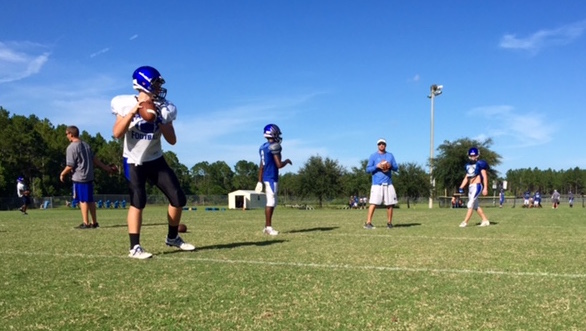By Troy MacNeill | gargoyle@flagler.edu
BOOM! All you can hear is a ringing sound in your ears. You feel the ground spinning. Your head is aching. The lights are on, but nobody is home.
If you ever played contact sports growing up or were around sports growing up, chances are you have experienced a concussion. Whether you have had one yourself or you had a teammate become sidelined because of it, concussions are one of the most serious injuries in sports today. There are attempts to keep sports safer that range from Pop Warner football or Little League baseball all the way up to the National Football League and the Major League of Baseball.
Trainers, doctors and coaches are all taking steps forward in an attempt to decrease the amount of concussions happening in sports today. This rise in concern is partly due to all of the former players speaking out against the safety in leagues such as the NFL.
In 2012, 80 concussion-related lawsuits by 2,000 NFL players were combined into a single class-action lawsuit against the NFL. In 2015, Will Smith starred in the movie “Concussion” which helped spread the story of chronic traumatic encephalopathy (CTE) discoveries in football players. Athletes have even decided to retire while in their prime because of the fear of concussions. For example, San Francisco 49ers’ players such as Anthony Davis, 25 and Chris Borland, 24, retired early into their career. In 2015, Borland suffered a head injury during training camp, and after an informed study, he decided to walk away from the game. Similarly, Davis told ESPN reporters that he was walking away from the game to “allow his brain and body to heal.” In response, all personnel are getting together to make sure players are safer during their career and long after they have retired.

Pedro Menendez High School Head Football Coach Patrick Turner, right, works with his players on a recent afternoon.
At the highest level, the NFL has announced a huge initiative on September 14 that will make the game safer from these serious head injuries. NFL Commissioner Roger Goodell stated that this initiative will increase safety by preventing, diagnosing and treating head injuries. The league and its 32 team owners will give $100 million in support of finding better treatments and advanced technology to keep their players safe.
At the college level, safety advocates are pushing trainers and coaches to educate their players in the best way possible to keep these injuries from happening.
“Our biggest thing is teaching the players techniques to stay safe,” said Chris Mathis, associate athletic Trainer at Flagler College. “We educate them to always be aware of their surroundings, in all sports.”
One high school football coach has even adopted a tackling technique that he hopes will keep the players safer.
“We use the “Hawk Tackling” technique by Pete Carroll and the Seattle Seahawks,” says Patrick Turner, head coach of the Pedro Menendez high school football team. The players are taught to tackle using their shoulders while keeping their heads up to avoid injury. “We tackle every day, so we practice safe tackling. Emphasize keeping your head out of the tackle.”
While Flagler may not have high contact sports such as football or lacrosse, concussions can happen in any sport.
“In soccer we teach the players to have the right technique when going up for a header,” said Mathis. “We don’t want their heads colliding. It does happen, but the players are learning to be aware of everything on the field.”
Mathis has also worked for schools that had a football program, and he says that the idea is basically the same.
“It’s all about recognition,” said Mathis. “For football, the trainers are all taking notice of how the athletes are hitting and then we bring that information to the coach. It’s all about the technique and the right equipment to keep them safe.”
If a trainer or coach does suspect any symptoms of a concussion, then the athlete is stopped and taken through the tests and protocol to keep them safe. Flagler’s concussion protocol, like most colleges, starts with the athlete being shut down for a minimum of seven days. This gives the brain time to heal and time for the athlete to be checked. While the athlete is sidelined, they will take the impact test, also known as a baseline test. This is a set of activities to test the player’s balance, vision and overall well-being. Next the trainers will contact the team physician and send the test results out for more evaluation.
“Even after the seven days, we have to make sure that the athlete is completely symptom free,” said Mathis. “These are serious injuries, and it’s about time that all levels of sports are treating it that way.”




Be the first to comment on "Rising concern about concussions in sports"